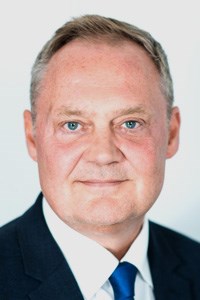NHS leaders have long argued for focus on, and investment in, putting patients first and joining up care around their needs. The NHS long term plan describes a future NHS in line with this vision, with primary care networks (PCNs) a major innovation to bring about integration.
PCNs do represent a potential revolution in the delivery of neighbourhood level health and care across the country. The promised speed of change is rapid, with PCNs aiming to impact the way that the whole population experiences local health and care over the next five years.
The lead up to April 2020 will be of critical importance to the future effectiveness of PCNs, and with that the success of local system integration. To get it right, providers and PCNs must work together.
The lead up to April 2020 will be of critical importance to the future effectiveness of PCNs, and with that the success of local system integration.
With that in mind, the Community Network – established by the NHS Confederation and NHS Providers – has produced the briefing Primary care networks: a quiet revolution as a guide for provider organisations on how to engage effectively with PCNs. It draws on published guidance, discussions with PCN leaders, and conversations with providers. The briefing also includes case studies that describe the strategic responses to the introduction of PCNs so far from three local providers.
Early challenges
In conversations with the Community Network, community services providers have welcomed the ambitions for PCNs, and recognised the opportunity to bring primary and community care closer together, their early experiences have revealed some challenges that will need to be overcome.
These include delays to progress of integration as GPs step back to focus on setting up PCNs, geographical complexities and the potential for competitive recruitment as PCNs recruit from the existing community workforce. There are challenges too around the timely reordering of services into geographically coherent structures that align with PCNs and establishing clear local leadership to build relationships and engage with a large number of new clinical directors.
There are challenges too around the timely reordering of services into geographically coherent structures that align with PCNs and establishing clear local leadership to build relationships and engage with a large number of new clinical directors.
We need to make sure we bring staff with us, making clear that this is about creating genuine population health focussed multi-disciplinary teams, and we must pay careful attention to aligning and integrating children’s health services which are commissioned by local authorities.
But there is enthusiasm to tackle these challenges and there is support from NHS England and Improvement’s regional teams, while the centre has stepped back from taking too prescriptive a role, and some funding attached.
Collaboration as the key priority
For PCNs to achieve their full potential, collaboration will continue to be the key priority. Providers can engage with PCNS as new strategic partners in the pursuit of system integration, and supply practical hands on support as they grow. To do that, all parties must work together effectively. This means focusing on building relationships, and on outcomes as well as processes. Strong relationships should help providers and PCNs alike tackle any frustrations as they arise, ensuring that the building blocks are in place for successful ongoing collaboration.
Strong relationships should help providers and PCNs alike tackle any frustrations as they arise, ensuring that the building blocks are in place for successful ongoing collaboration.
A successful PCN will be one that enables general practices to work hand in glove with any and all local providers who are relevant to their neighbourhoods. This will require collaboration, sharing data and skills, and avoiding duplication of work and workforce as organisations prepare together to meet upcoming national specifications and requirements for joined-up delivery.
A quiet revolution
PCNs promise substantial benefits for patients, providers and the system alike. For patients, care will be better coordinated and delivered more conveniently, in settings closer to home. Providers can anticipate greater capacity and resilience, with funding due to increase at a greater rate than elsewhere in the system. PCNs should enable ‘triple integration’ of care across local systems, with increased consistency of quality and outcomes.
This revolution may be relatively quiet, but if providers and PCNs can find ways to work together effectively it will bring lasting benefits for all.
To realise that potential, community providers will need to seize the opportunity for meaningful collaboration. This revolution may be relatively quiet, but if providers and PCNs can find ways to work together effectively it will bring lasting benefits for all.
This article was first published by HSJ on 29 July 2019.
About the author

